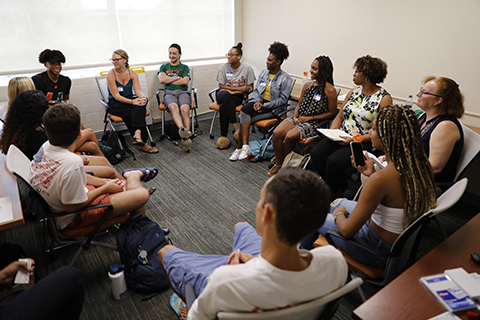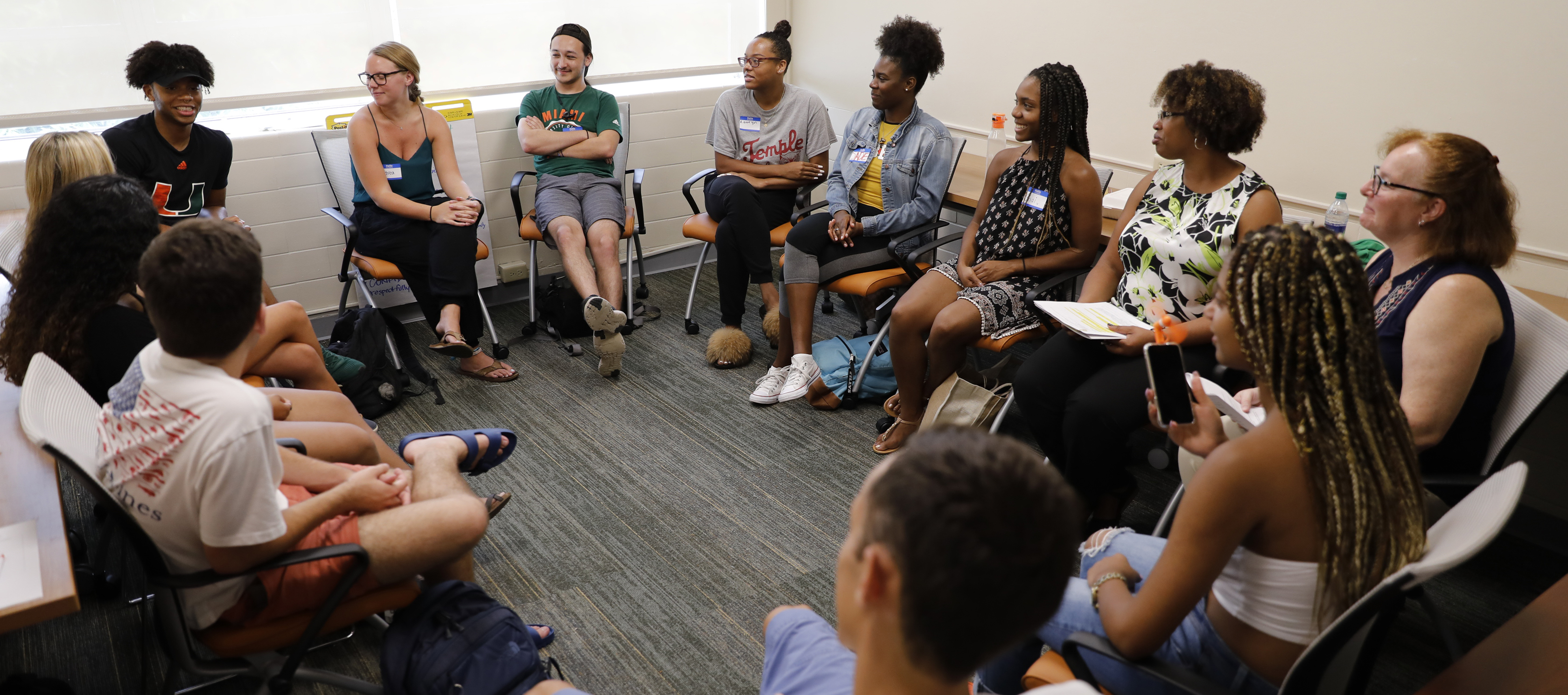In the Harkness method, a small number of students (usually 12 to 15) sit around an oval table, where they initiate and lead discussions about assigned texts, learning with and from one another. In a Harkness classroom, students are the protagonists of their learning: they question, comment, explain, cite, agree and disagree as they attempt to make sense of new content. Faculty, meanwhile, are primarily planners and facilitators, carefully assigning texts and discussion-provoking activities in view of course objectives and then working to ensure balance and focus during student discussions.
Developed at Phillips Exeter Academy - a private secondary school in New Hampshire - the Harkness method owes its name to Edward Harkness, who conditioned a large donation to the school on the creation and implementation of a more inclusive, discussion-based pedagogy. It is worth noting that the University of Miami is the first institution of higher education to adopt this method at scale as part of a formal pedagogical initiative.





